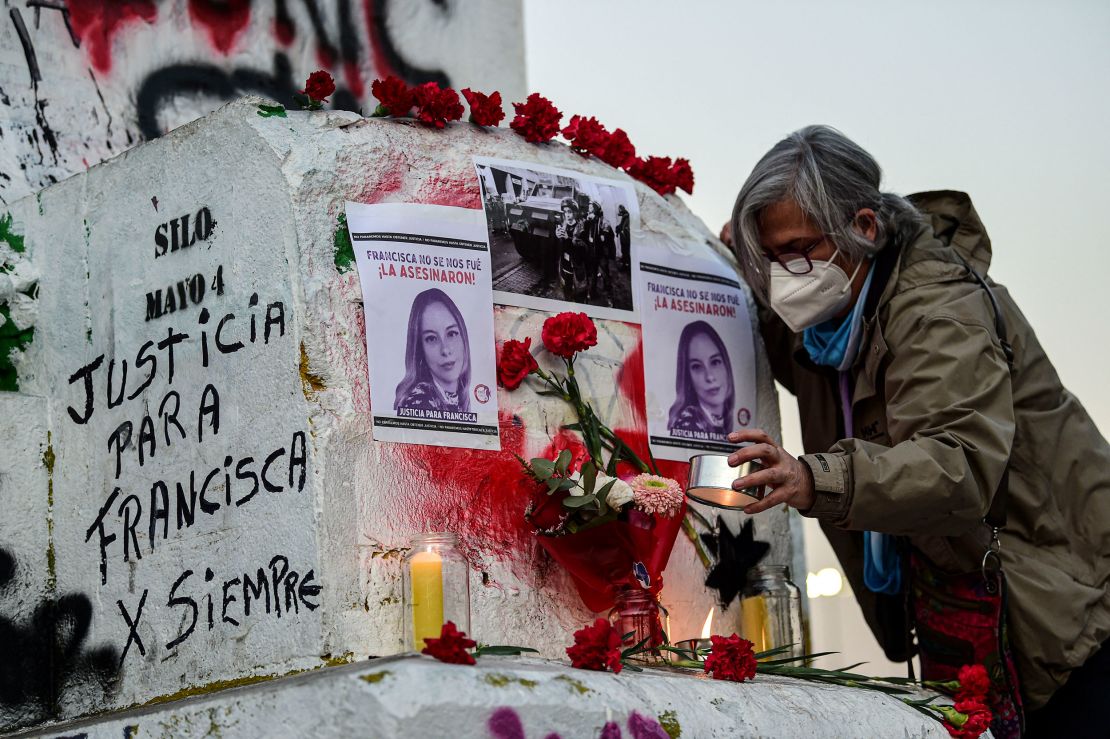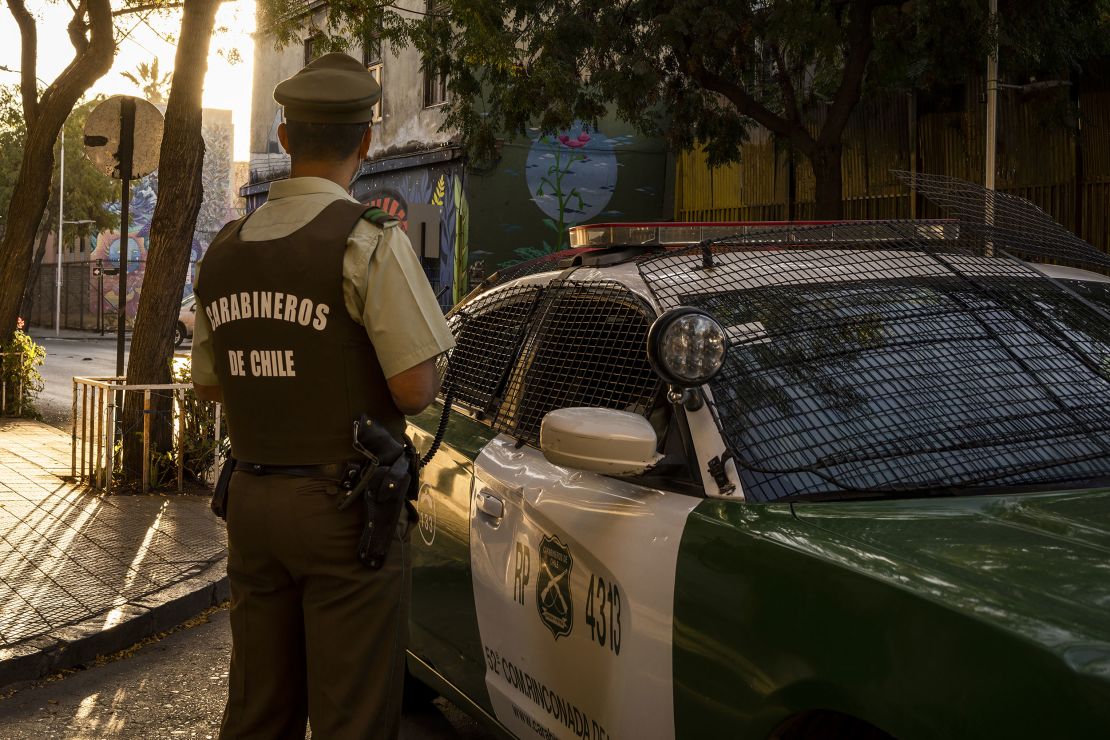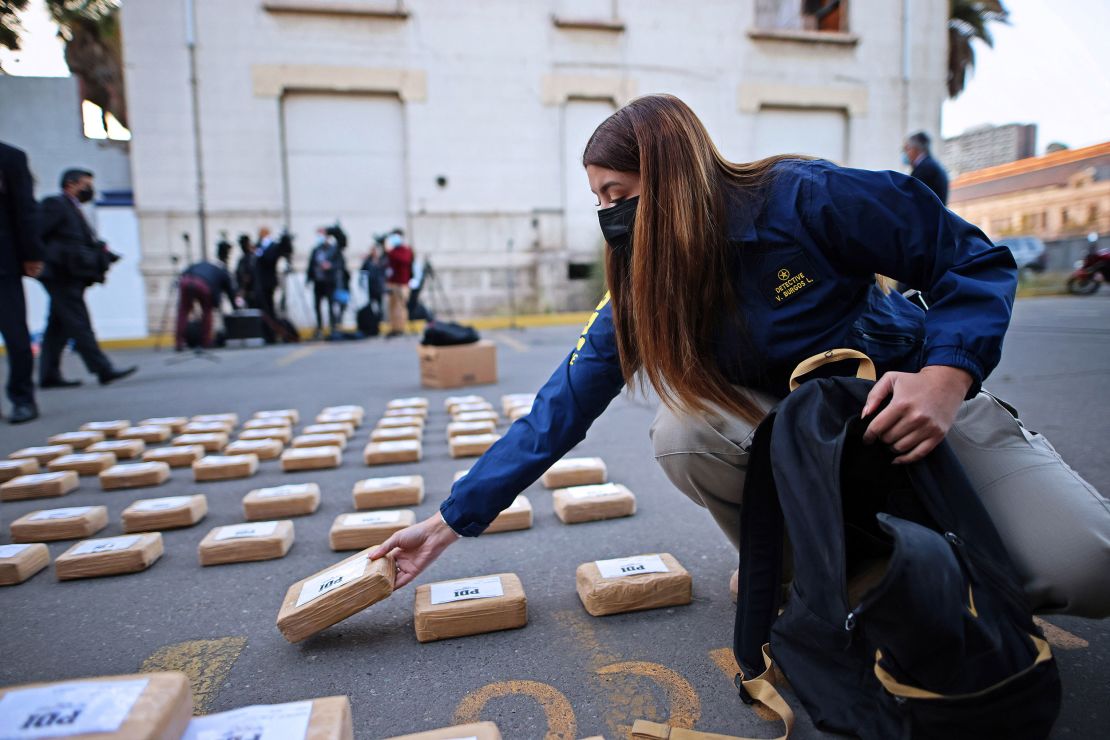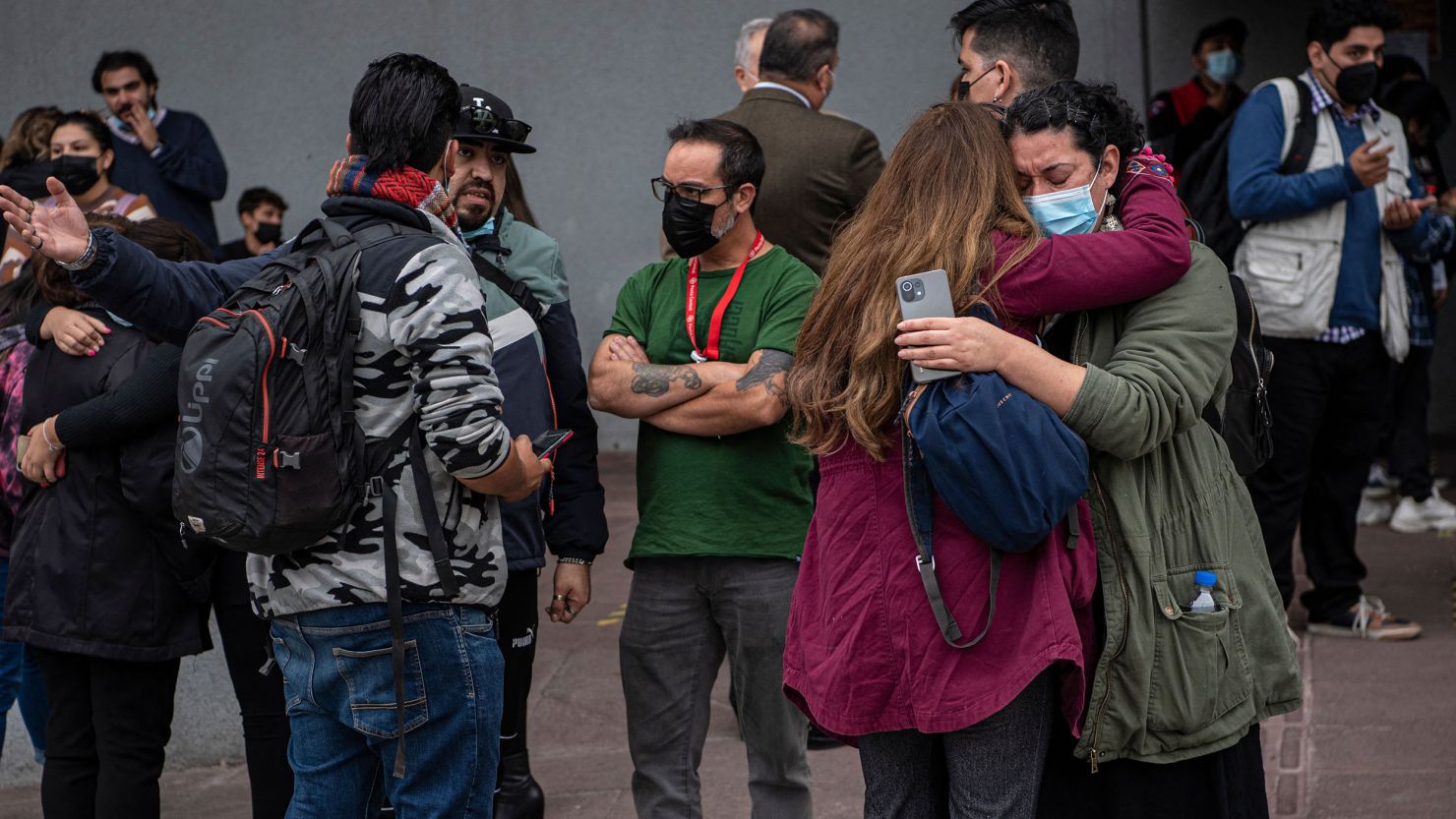On May 1, Francisca Sandoval, a young Chilean reporter, traveled to a commercial district of the capital, Santiago, to cover a union rally commemorating International Workers’ Day. It would be her final report.
During the demonstration, violent clashes broke out between local gangs, protesters, and the police. A group of armed gang members fired shots, leaving three people injured, including Sandoval. The 29-year-old journalist died 12 days later.
Sandoval’s death has shed a spotlight on an astronomical rise in lethal violence recorded in the country. Similar incidents have long plagued countries such as Colombia and Brazil, but in Chile it’s a fairly new phenomenon. Data ranges across Chile’s public entities, however all present alarming figures. Between 2016 and 2021, homicides rose by 40%, according to Chile’s Department of Crime Prevention. Meanwhile, the National Prosecutor’s office found that murders rose by 66% from 2016-2020.
As homicides – and the use of firearms – continue to multiply, public safety has become one of newly elected President Gabriel Boric and his government’s top challenges. He is battling both a powerful influx of drug trade-related criminal activity in cities as well as drug traffickers who are exploiting historic tensions between the state and indigenous communities in the south – and who are now gaining control of territory amid an outbreak of violence.
Politically and economically stable, the country has long registered low crime rates compared to the rest of the region. Chile’s homicide rate stands at 3.6 per 100,000 people as of 2021, according to Insight Crime, a think-tank that provides information about organized crime in the Americas. Compared with Venezuela, at 40.9 per 100,000 people; Colombia, at 26.8 per 100,000; and Brazil, at 18.5, Chile still ranks low in comparison regionally, according to the organization’s annual “Homicide Round-Up” report. In the United States, the murder rate reached 7.8 per 100,000 in 2020, marking the highest annual increase in the rate of homicides in 100 years, according to CDC data.

However, the Insight Crime report also states that “while Chile long avoided the type of criminal activity and gangs that plagued other countries, that no longer appears to be the case.”
Chile´s Department of Crime Prevention reported that homicides increased by nearly 30% between 2019 and 2020, with police attributing the rise to the pandemic, economic slowdown, and a resulting increase in illicit trade. While homicides dropped by 21.8% between 2020 and 2021, cumulative figures since 2017 show an overall uptick in the murder rate.
“Chile’s situation is worrisome,” Juan Pablo Luna, a political scientist at the Institute of Political Science of the Catholic University of Chile told CNN, adding that it is not alone as it descends into violence.
“Countries where the state is relatively strong and with solid democracies were supposed to be immune to this kind of scenario, but now we see that it was an illusion,” Luna said.
He pointed to Paraguay, Peru, Uruguay and Ecuador, among others in the region, who have also been confronted with rising crime.
Ecuador’s statistics are particularly striking, with homicides climbing by 84.4% in the past year, according to the country’s National Institute of Statistics and Census. In Uruguay, the Ministry of Interior recently said there had been more than a 33% increase within a year. In Peru, the government declared a state of emergency in Lima and the region of Callao earlier this year to fight crime, targeting mostly contract killings. And in Paraguay, murders by hitmen also rose significantly last year, according to Insight Crime.
Experts attribute the rise in violence across the region to the expanding reach of global crime networks.
Alejandra Mohor, a sociologist at the Center for Public Safety Studies of the Public Affairs Institute at the Universidad de Chile told CNN that “we are witnessing a higher infiltration of international organized crime in these countries.”
“Because of globalization, the type of crimes we see have changed. In extremely violent countries like Colombia or Venezuela, you may not notice it, but in Chile, Ecuador Peru, Bolivia and probably Argentina, the level of specialization of this criminal business is having a huge impact because it´s new,” Mohor said.
However, this expansion in Chile hasn’t happened overnight.

New criminal strategies have progressively developed over the past decade, but authorities failed at anticipating how seriously it would affect society, experts say.
In 2011, for example, Santiago Metropolitan Region’s Coroner Services warned in a report that gun-related murders were trending upwards. “The increase in deaths by firearms among young people in our country is a phenomenon that should draw our attention,” the report stated.
But it didn´t gain much traction with law enforcement or city officials, Mohor said. As violence grew, public policies implemented by the successive governments failed to address the basic needs of many low-income neighborhoods, which in turn, provided fertile ground for criminal groups to settle – and for the drug trade to proliferate.
“We have people living in segregated areas, far from their workplace, with no good public transportation, and no schools or health services available. And when the state is absent, organized crime starts to fill that void,” she said.
In a 2021 article from the Urban Violence Research Network, researchers said that inequality in Latin America felt by the poor and working class with “few other options for survival” made them “easy recruits into the drug trade.”
“The cocaine trade integrates marginalized territories that have been abandoned by the state into global markets and acts as a driver of development,” the organization said.
Paradoxically, prosperity is also considered a cause of the rising violence. More money means more drugs, according to Luna, and the commodities boom that favored South America until 2014 helped illicit businesses to thrive. Higher drug consumption also followed the increase of purchasing power, attracting new actors to the illegal economy, and consolidating southern drug trafficking routes.
All these factors triggered new territorial disputes between gangs and more violence in Chile, as well as in Uruguay, Paraguay, and Ecuador.
‘Surrounded by drug dealers’
N. G., who CNN is not identifying fully for safety concerns, lives in Santiago’s impoverished El Bosque neighborhood and has felt that transformation first-hand. The 28-year-old has lived with her mother in the same house since she was born – but now barely recognizes their block.
“When I was a child, my main worry was that my mother would find me playing in the street instead of doing my homework when she got back home. Now I barely go out,” she said. “We live surrounded by drug dealers.”
Most of the time, she says she is scared.
“Every day we hear fireworks, because dealers use them as a signal that drug loads arrived, because there is a narco-funeral, or just to cover the noise of the shootings. We seldom see the police – we can’t live in peace,” she said.
N. G. said that such insecurity has gotten worse since the Covid-19 pandemic began. Experts explain that the economic crisis, a rise in migrant smuggling along the Bolivian-Chilean border and police corruption have only exacerbated the problem, allowing organized crime to take on a whole new dimension.

Last September, the Chilean Observatory on Drugs warned about the rise of two Mexican cartels (the Sinaloa and the Jalisco New Generation) and a Colombian cartel (Cartel del Golfo) in Chile. Mexican cartels have also increased their operations in Argentina, Colombia, Peru, and Ecuador, according to Ernesto López Portillo, coordinator of the public safety program at the Universidad Iberoamericana in Mexico City.
Another notorious cartel that’s also now made their mark in Chile is the Venezuelan Tren de Aragua, one of the continent’s most dangerous criminal organizations, according to Insight Crime and Ximena Chong, a chief prosecutor in Santiago. Its leaders have taken advantage of the migration crisis in the north to tighten their grip on new territories, according to Insight Crime.
To cement their hold, transnational criminal groups are adapting to each new country by making new alliances with local gangs, Mohor explained.
“We are not talking about drug trafficking or micro trafficking anymore,” Chong told CNN. “These are organizations that work like holdings, with a diversity of illicit activities: murder for hire, illicit firearms trafficking, extorsion, human trafficking, sexual exploitation and more.”
In this context, many South American countries don´t have the means to properly address the issue, Chong said, as the criminal groups’ tactics are evolving quicker than many country’s abilities to investigate them. Chile, for example, is lacking in specialized police forces, innovative police technologies, and of adequate witness protection programs. All this coupled with corruption represents huge obstacles to prosecuting and sanctioning criminal groups, Chong added.
“We need to develop new prosecution strategies that go beyond specific criminal events, above all considering that, internationally, we are seeing criminal organizations permeating public services,” she said.
The day after Sandoval, the Chilean journalist, was shot, a man with previous criminal record for drug-dealing was arrested and has since been charged with her killing, Chilean media reported. The weapon he allegedly used has not yet been found, however authorities have established that the bullet was a calibre 40. The presidential delegate for Santiago’s Metropolitan Region said the shooting was connected to organized crime and lax gun control, two issues the government are set to tackle.
“States are completely incapable of dismantling transnational organized crime,” López Portillo said.
“This is affecting the health of democracies and weakening the already fragile rule of law. And the countries that had less violence are not exempt from this reality because criminal markets have no frontiers and never will.”





